Date: February 29, 2024
Time: 12:00pm PST/ 2:00pm CST/ 3:00pm EST
"*" indicates required fields
By submitting this form you agree to receive email communication from RQI Partners, along with any relevant marketing materials to help provide you with important information. We will handle your personal contact details with care as outlined in RQI Partners Privacy Policy.
"*" indicates required fields
By submitting this form you agree to receive email communication from RQI Partners, along with any relevant marketing materials to help provide you with important information. We will handle your personal contact details with care as outlined in RQI Partners Privacy Policy.
"*" indicates required fields
By submitting this form you agree to receive email communication from RQI Partners, along with any relevant marketing materials to help provide you with important information. We will handle your personal contact details with care as outlined in RQI Partners Privacy Policy.
By submitting this form you agree to receive email communication from RQI Partners, along with any relevant marketing materials to help provide you with important information. We will handle your personal contact details with care as outlined in RQI Partners Privacy Policy.
By submitting this form you agree to receive email communication from RQI Partners, along with any relevant marketing materials to help provide you with important information. We will handle your personal contact details with care as outlined in RQI Partners Privacy Policy.
Start your digital resuscitation education journey with us to maximize lifesaving outcomes from sudden cardiac arrest. Contact us to learn more.
"*" indicates required fields
By submitting this form you agree to receive email communication from RQI Partners, along with any relevant marketing materials to help provide you with important information. We will handle your personal contact details with care as outlined in RQI Partners Privacy Policy.
Start your training centers’ digital resuscitation education journey with us to maximize lifesaving outcomes from sudden cardiac arrest. Contact us to learn more.
By submitting this form you agree to receive email communication from RQI Partners, along with any relevant marketing materials to help provide you with important information. We will handle your personal contact details with care as outlined in RQI Partners Privacy Policy.
"*" indicates required fields



